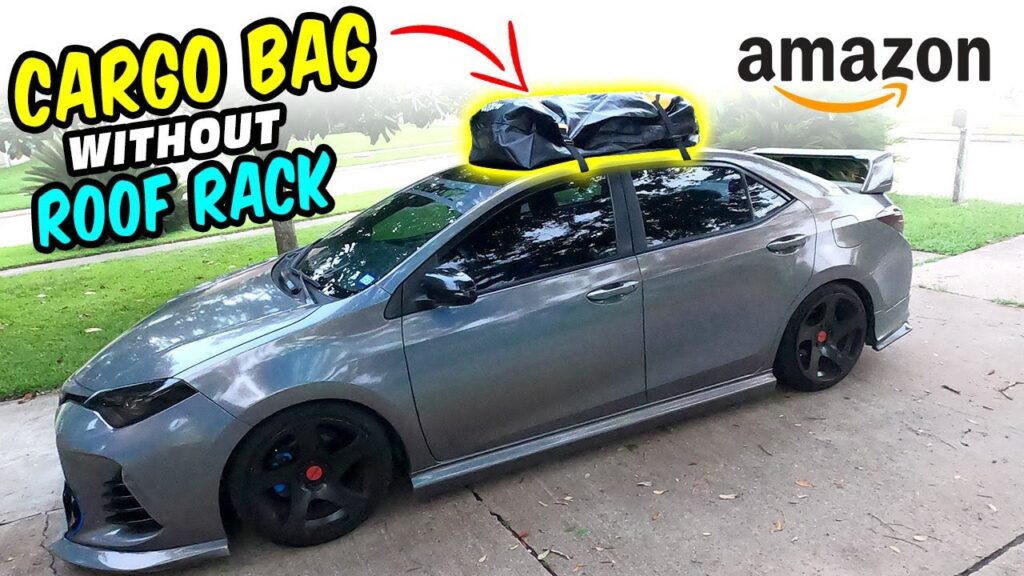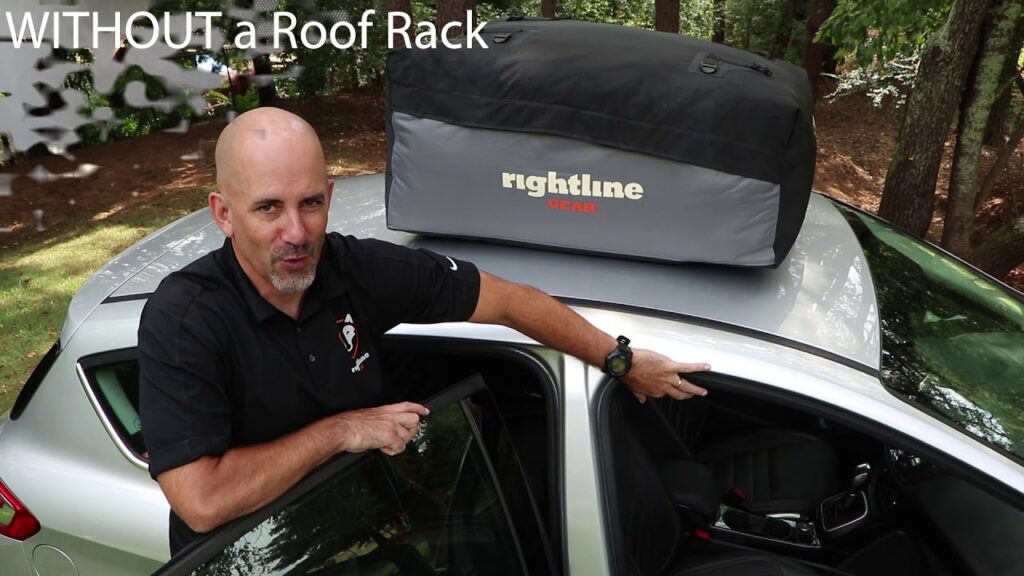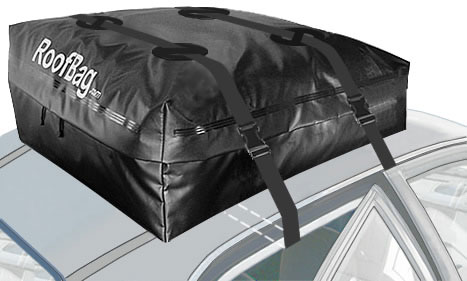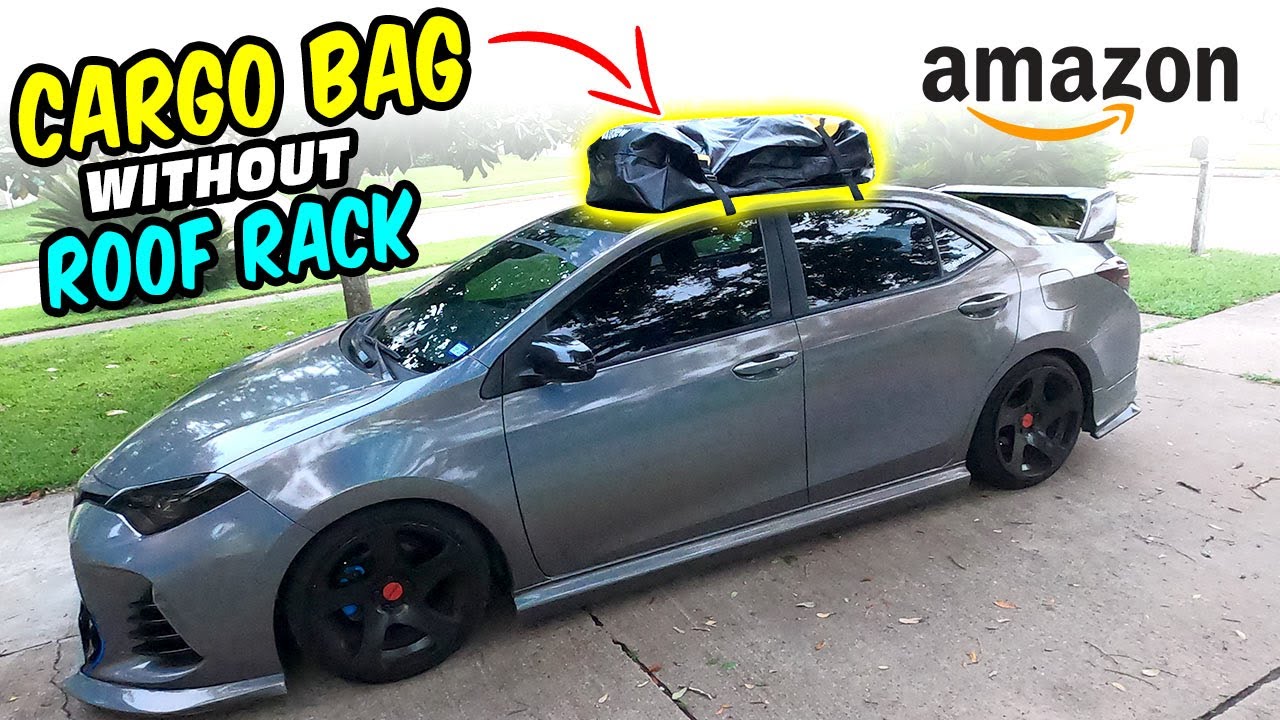In this article, we will discuss an alternative way of using a roof bag on your vehicle, even if you don’t have a roof rack. You will learn practical tips and steps on how to securely attach and utilize a roof bag on a vehicle without a roof rack. By the end, you will have the knowledge to safely transport your belongings on top of your car, no roof rack required.

This image is property of i.ytimg.com.
Using a Roof Bag on a Vehicle without a Roof Rack
Are you looking for a convenient and cost-effective solution to increase your vehicle’s storage capacity? Using a roof bag without a roof rack might be the perfect option for you. Whether you’re planning a road trip, camping adventure, or simply need extra space for luggage, a roof bag offers numerous benefits. In this article, we will explore the advantages of using a roof bag without a roof rack and provide useful tips on choosing, installing, and securing a roof bag on your vehicle.
Benefits of using a roof bag without a roof rack
Increased storage capacity
One of the primary advantages of using a roof bag without a roof rack is the significantly increased storage capacity it provides. Roof bags are designed to maximize the available space on top of your vehicle, allowing you to transport larger items such as camping gear, sports equipment, or even furniture. With a roof bag, you can free up valuable interior space and ensure a more comfortable and organized journey.
Versatility and compatibility with different vehicles
Unlike roof racks, which are often specific to certain vehicle models or require professional installation, roof bags offer a high level of versatility and compatibility. Most roof bags are designed to fit a wide range of vehicles, including sedans, SUVs, and even smaller cars. This means that whether you own a compact car or a spacious SUV, you can easily find a roof bag that suits your needs.
Cost-effective alternative to installing a roof rack
Installing a roof rack can be a costly investment. Not only do you need to purchase the rack itself, but you may also need to hire a professional to install it correctly. On the other hand, using a roof bag without a roof rack is a more cost-effective option. Roof bags are typically more affordable than roof racks, and they require no additional installation expenses. This makes them an attractive choice for those who want to increase their storage capacity without breaking the bank.
Choosing the right roof bag for a vehicle without a roof rack
When selecting a roof bag for your vehicle without a roof rack, there are several factors to consider to ensure a safe and efficient storage solution.
Consider the size and capacity of the roof bag
Roof bags come in various sizes and capacities, so it’s important to choose one that aligns with your storage needs. Consider the dimensions of the items you plan to transport and choose a roof bag that allows for proper fitting and secure fastening. Additionally, be mindful of the weight capacity of the roof bag to prevent overloading, which can be hazardous during travel.
Check the material and durability
The material and durability of the roof bag are crucial for withstanding different weather conditions and protecting your belongings. Look for roof bags made from high-quality, weather-resistant materials such as waterproof nylon or polyester. These materials offer durability, UV protection, and resistance to tearing or puncturing. Additionally, reinforced seams and sturdy zippers are essential features to ensure long-lasting use.
Look for features like weather resistance and waterproofing
Since your roof bag will be exposed to the elements during travel, it’s important to choose one that offers weather resistance and waterproofing capabilities. Look for roof bags with built-in weatherproofing features such as sealed seams or a waterproof coating. This will protect your belongings from rain, snow, and dirt, ensuring they remain dry and in good condition throughout your journey.
Ensure compatibility with your vehicle’s roof type
Different vehicles have different roof types, and it’s crucial to ensure that the roof bag you choose is compatible with your specific vehicle. Some roof bags are designed to be used with bare roofs, while others might require the use of a roof rail or crossbars. It’s essential to carefully read the manufacturer’s instructions and specifications to ensure proper installation and compatibility.
Preparing your vehicle for a roof bag without a roof rack
Before installing a roof bag on your vehicle without a roof rack, it’s important to properly prepare the vehicle to ensure a secure and damage-free installation.
Clean and dry the roof surface
Start by thoroughly cleaning your vehicle’s roof surface. Remove any dirt, debris, or residue that might hinder the roof bag from adhering properly. This will ensure a strong and secure attachment. Additionally, make sure the surface is completely dry before installing the roof bag to prevent any potential water damage.
Protect the roof paint with a non-slip mat
To prevent any scratches or damage to your vehicle’s roof paint, place a non-slip mat or protective cover on the roof surface before installing the roof bag. This will provide an extra layer of protection and ensure that the roof bag stays in place and doesn’t cause any damage during travel.
Locate and secure anchor points on the vehicle
Roof bags without roof racks rely on secure anchor points to stay in place during travel. Locate the anchor points on your vehicle, which can be found along the door frames or under the hood. These anchor points will serve as attachment points for the straps or mounting hooks on the roof bag.
Use protective measures like adhesive pads or foam blocks
To further enhance the stability and protection of the roof bag, consider using additional protective measures such as adhesive pads or foam blocks. These can be placed between the roof bag and the vehicle’s roof surface to provide extra grip, prevent rubbing or scratching, and ensure a secure attachment.
Installation and securing the roof bag on a vehicle without a roof rack
Once your vehicle is prepared, it’s time to install and secure the roof bag properly. Follow these steps to ensure a safe and secure attachment:
Spread the roof bag on the prepared surface
Carefully spread the roof bag on the prepared roof surface, ensuring it is centered and appropriately positioned. Make sure the opening of the roof bag is facing the rear of the vehicle for easy loading and unloading.
Attach the straps or mounting hooks to the anchor points
Using the provided straps or mounting hooks, attach the roof bag to the anchor points on your vehicle. Make sure the attachment points are secure and properly tightened. Adjust the straps or hooks to ensure an even and balanced distribution of weight.
Tighten and secure the straps or hooks
Once the roof bag is attached to the anchor points, tighten the straps or hooks to ensure a secure and stable installation. The roof bag should be firmly held in place without any visible movement or shifting.
Distribute the load evenly and avoid overloading
When filling the roof bag with your belongings, make sure to distribute the load evenly to prevent any imbalance or excess strain on the roof bag and vehicle. Avoid overloading the roof bag beyond its recommended weight capacity to maintain safety and stability during travel.

This image is property of i.ytimg.com.
Packing and organizing items in a roof bag without a roof rack
Efficient packing and organization of your belongings in a roof bag are essential not only for maximizing storage space but also for maintaining stability during travel. Follow these guidelines for optimal packing:
Lay a protective base layer to prevent damage
To protect your belongings and prevent damage, start by laying a protective base layer in the roof bag. This can be a soft blanket, a foam pad, or any other suitable material. The base layer acts as a cushion, preventing scratches, shifting, and potential damage during transportation.
Place heavier and bulkier items at the bottom
When loading your belongings into the roof bag, place heavier and bulkier items at the bottom. This helps to maintain the stability and balance of the vehicle while preventing damage to lighter and more fragile items.
Fill empty spaces with soft items for stability
To minimize shifting and movement during travel, use soft items such as pillows, blankets, or clothing to fill any empty spaces in the roof bag. This provides stability and prevents items from bouncing around or being damaged by vibrations.
Secure loose items with straps or nets
For additional security, consider using straps or nets to secure any loose or oddly shaped items. This will prevent them from moving or falling out of the roof bag during travel.
Safe driving tips with a roof bag on a vehicle without a roof rack
While using a roof bag without a roof rack is a convenient and versatile storage solution, it’s important to drive safely and take necessary precautions. Here are some tips to ensure a safe and comfortable journey:
Check the load and ensure stability before driving
Before hitting the road, double-check the load in the roof bag and ensure it is secure and stable. Make sure all straps or hooks are properly tightened and that the roof bag is evenly balanced.
Drive cautiously and adjust for increased wind resistance
It’s crucial to adjust your driving style to account for the increased wind resistance caused by the roof bag. Drive cautiously, especially in windy conditions, and be prepared for reduced handling and increased fuel consumption.
Avoid sudden maneuvers and high speeds
To maintain stability and reduce the risk of accidents, avoid sudden maneuvers such as rapid lane changes or abrupt braking. High speeds can also affect the stability of the vehicle, so it’s advisable to drive at a moderate speed that is comfortable and safe.
Regularly check the roof bag and straps during the journey
During long trips, it’s important to periodically check the roof bag and straps for any signs of loosening or shifting. Make any necessary adjustments or tightening to ensure the load remains secure throughout the journey.

This image is property of i.ytimg.com.
Uninstalling and storing a roof bag without a roof rack
Once you’ve reached your destination or no longer need the roof bag, follow these steps to safely uninstall and store it:
Release and loosen the straps or hooks
Start by releasing and loosening the straps or hooks that are securing the roof bag to the anchor points. This will allow you to easily remove the roof bag from the vehicle.
Remove the roof bag from the vehicle
Carefully lift the roof bag off the vehicle’s roof surface, ensuring it is clear of any obstacles or obstructions. Take care not to damage the vehicle or any surrounding objects during removal.
Clean and dry the roof bag before storage
To ensure the longevity of your roof bag, it’s important to clean it thoroughly before storing it. Remove any dirt, debris, or stains and allow the roof bag to dry completely to prevent any potential mold or mildew growth.
Store the roof bag in a cool and dry place
To maintain the quality and condition of the roof bag, store it in a cool and dry place when not in use. Avoid exposure to excessive heat or moisture, as this can deteriorate the material and decrease its lifespan.
Advantages and disadvantages of using a roof bag without a roof rack
While using a roof bag without a roof rack offers several advantages, it’s important to consider potential disadvantages and limitations before making a decision.
Advantages include easy installation and removal
One of the noteworthy advantages of using a roof bag without a roof rack is the ease of installation and removal. Compared to installing a roof rack, which can be time-consuming and require professional assistance, a roof bag can be quickly and effortlessly attached or detached as needed.
Disadvantages include potential damage to the roof surface
Using a roof bag without a roof rack may pose a risk of potential damage to the vehicle’s roof surface. The pressure exerted by the straps or hooks, if not properly secured or padded, can cause scratches, dents, or paint damage. It’s essential to take appropriate precautions and use protective measures to avoid any harm to the vehicle.
Advantages include cost-effectiveness compared to roof racks
If cost is a major consideration, using a roof bag without a roof rack offers a significant advantage. Roof bags are generally more affordable than roof racks, and their installation doesn’t require any additional expenses. This makes them an attractive option for individuals looking for a budget-friendly storage solution.
Disadvantages include limited weight capacity
While roof bags can provide increased storage capacity, it’s important to be mindful of their weight limitations. Roof bags typically have a maximum weight capacity, and exceeding this limit can compromise the stability and safety of your vehicle. It’s crucial to carefully follow the manufacturer’s guidelines and recommendations to ensure a safe and stress-free journey.

This image is property of www.roofbag.com.
Frequently Asked Questions (FAQ) about using a roof bag without a roof rack
Can a roof bag be used on any vehicle without a roof rack?
Roof bags are generally designed to be compatible with a wide range of vehicles, including those without a roof rack. However, it’s important to check the manufacturer’s specifications and instructions to ensure compatibility with your specific vehicle. Different roof bag models may have specific requirements or limitations.
Is it necessary to use additional securing measures for safety?
Using additional securing measures, such as adhesive pads or foam blocks, can enhance the stability and safety of a roof bag on a vehicle without a roof rack. While not always necessary, these measures can provide extra protection against shifting or damage during travel.
Are roof bags suitable for long-distance travel?
Roof bags are suitable for both short and long-distance travel. However, it’s important to consider factors such as wind resistance, weight distribution, and overall stability when planning a long trip. Regularly checking the roof bag and straps during the journey is also advisable to ensure everything remains secure.
Can a roof bag be used in different weather conditions?
Most roof bags are designed to withstand different weather conditions. Look for roof bags made from weather-resistant materials and with built-in weatherproofing features such as sealed seams or a waterproof coating. This will ensure that your belongings remain protected from rain, snow, and dirt during your travels.
Conclusion
Using a roof bag without a roof rack provides numerous benefits in terms of increased storage capacity, versatility, and cost-effectiveness. By choosing the right roof bag, preparing the vehicle properly, and following safe installation and driving practices, you can successfully utilize a roof bag for your storage needs. While there are some disadvantages and considerations, the convenience and practicality of using a roof bag make it a viable option. So, next time you need extra storage space for a road trip or outdoor adventure, consider using a roof bag on your vehicle without a roof rack.

This image is property of thebossmagazine.com.

